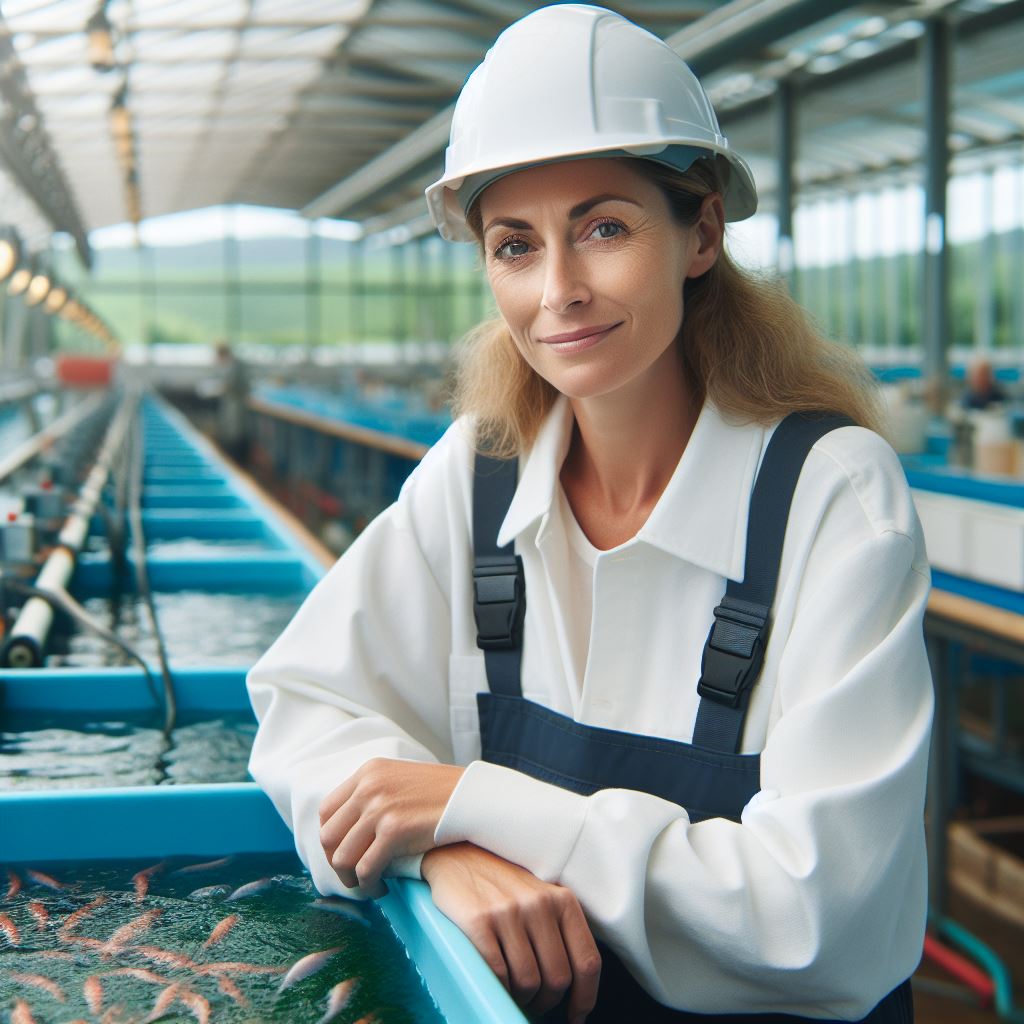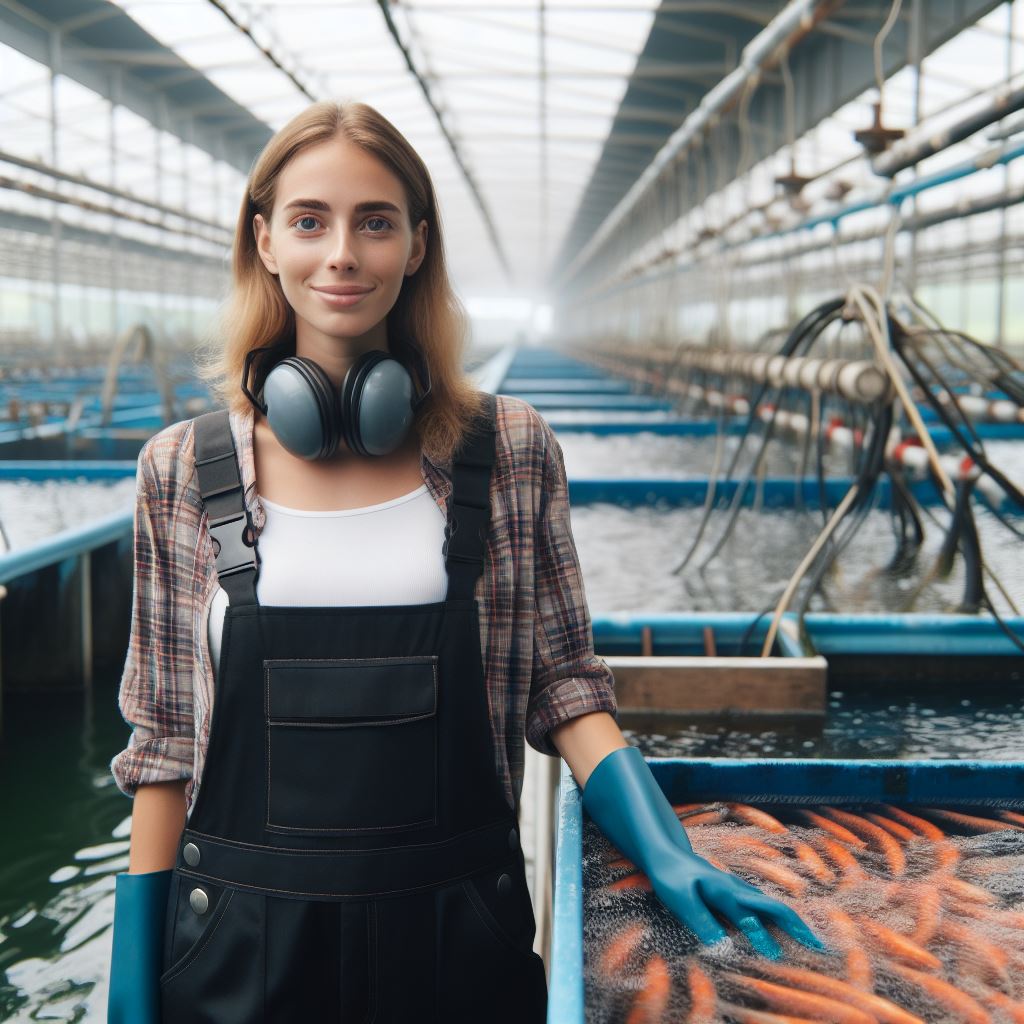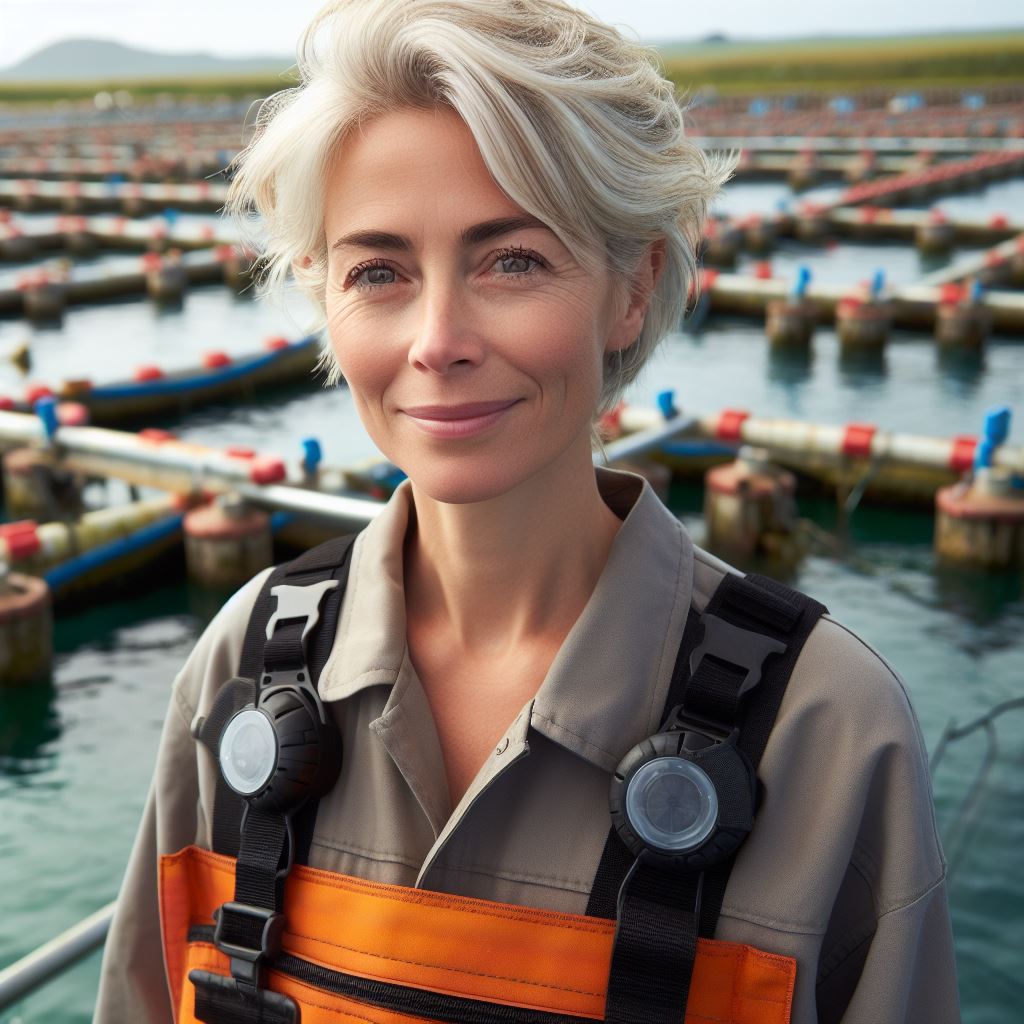Introduction
Aquaculture equipment is a booming industry in the UK, with significant importance in supporting the country’s economy.
The key to successful aquaculture lies in having the right equipment for efficient and productive operations.
Aquaculture plays a crucial role in the growth and development of the UK’s seafood sector.
It not only provides a sustainable source of seafood but also contributes to job creation and food security.
The industry’s impact on local communities and the economy cannot be underestimated.
Having the appropriate equipment is essential for successful aquaculture operations in the UK.
The right tools facilitate efficient farming practices, ensuring optimal growth, health, and quality of aquatic species.
It allows farmers to monitor and control various parameters such as water quality, temperature, oxygen levels, and feeding regimes.
Investing in high-quality aquaculture equipment not only enhances productivity but also reduces the risk of disease outbreaks and environmental impact.
Proper equipment helps farmers maintain optimal conditions, prevent escapes, and minimize waste and pollution.
It ensures that aquaculture is carried out sustainably and in compliance with regulations and standards.
From hatcheries to grow-out farms, the right equipment is critical at every stage of aquaculture. Tanks, cages, nets, pumps, and aerators are just a few examples of the indispensable tools required.
Each piece of equipment serves a specific purpose and contributes to the overall success of an aquaculture operation.
In essence, aquaculture equipment essentials are vital for the growth and sustainability of the industry in the UK.
Choosing the right tools and technologies can significantly improve productivity, reduce risks, and ensure responsible and profitable aquaculture practices.
Personalized UK Career Consulting
Receive tailored career guidance designed just for you. Get actionable steps and expert support to boost your career in 1-3 days. Take control of your career now.
Get StartedOverview of Aquaculture Equipment
Aquaculture equipment required for successful operations
Aquaculture is a rapidly growing industry in the UK, and to ensure successful operations, it is crucial to have the right equipment.
Various types of aquaculture equipment are required, depending on the specific activities involved, such as fish farming or shellfish farming.
The importance of selecting the right equipment
The importance of selecting the right equipment for specific aquaculture activities cannot be overstated.
Each type of aquaculture requires specialized equipment to create an optimal environment for the growth and development of aquatic organisms.
High-quality, durable, and efficient equipment to ensure productivity and profitability in aquaculture
Aquaculture relies on crucial equipment:
- Tanks and Ponds: Contain and rear fish or shellfish. Tanks suit indoor farming; ponds, outdoor cultivation.
- Aeration Systems: Ensure adequate oxygen, vital for aquatic organisms. Boost dissolved oxygen levels in tanks or ponds.
- Water Quality Monitoring Equipment: Vital for healthy aquatic life. Includes pH meters, oxygen meters, and temperature probes for optimal conditions.
- Feeding Systems: Automate precise feeding, improving efficiency and reducing labor in fish or shellfish farming.
- Filtration Systems: Remove solid particles, debris, and waste. Maintain water clarity and quality for aquatic organism health.
- Netting and Fencing: Contain fish and protect sites. Netting for ponds or cages, fencing for predator and intrusion prevention.
- Harvesting Equipment: Facilitate efficient and gentle harvesting with nets, traps, and graders.
- Pumps and Plumbing Systems: Ensure water circulation for optimal conditions. Facilitate filtration, aeration, and equipment operation.
Select aquaculture equipment prioritizing:
- Quality, durability, and efficiency for productivity.
- High upfront cost pays off with long-term productivity and profitability.
- Designed to withstand the aquatic environment, resist corrosion, and require minimal maintenance.
- Longer service life reduces replacements or repairs.
Durable equipment enhances:
- Stability, growth, health, and survival rates for aquatic organisms.
- Productivity by maintaining stable conditions.
- Efficient operations with automated feeding systems, cutting labor and minimizing feeding risks.
In the UK, aquaculture thrives with quality, durable equipment, ensuring optimal conditions for aquatic organisms.
Key Aquaculture Equipment Essentials
When it comes to fish farming, several essential equipment are required to ensure a successful operation. These include:
Equipment for fish farming
- Ponds or Tanks: These are the primary structures used to house the fish and provide them with a suitable environment for growth.
- Aerators: Essential for maintaining optimal oxygen levels in the water, especially in densely stocked fish ponds or tanks.
- Fish Feed Systems: Automatic or manual feeding systems are used to supply the fish with the necessary nutrients for their growth and development.
The role of equipment
On the other hand, shellfish farming relies on specific equipment to facilitate the cultivation of these valuable seafood products. Some of the key equipment includes:
- Nets: Used to enclose areas of water and prevent shellfish from escaping or predators from entering.
- Cages: These structures are utilized to confine shellfish and protect them while they grow and mature.
- Buoys: Important for delineating the boundaries of shellfish farming areas and providing support for various infrastructure.
Water quality monitoring and filtration systems
Furthermore, maintaining water quality is crucial in aquaculture, and several equipment essentials serve this purpose:
- Water Quality Monitoring Systems: These devices continuously monitor parameters such as temperature, dissolved oxygen, and pH levels, ensuring optimal conditions for the fish or shellfish.
- Filtration Systems: Help in removing impurities, excess waste, and harmful substances from the water, preventing potential health issues for the aquatic organisms.
Specialized equipment for disease prevention and control
Additionally, disease prevention and control are significant considerations in aquaculture, necessitating the use of specialized equipment:
- Water Disinfection Systems: These systems employ various methods such as UV sterilization or ozone treatment to eliminate pathogens and reduce the risk of disease outbreaks.
- Mechanical Harvesters: In certain cases, the use of mechanical harvesters is necessary to collect the fish or shellfish efficiently, minimizing stress and potential injuries.
Lastly, aquaculture heavily relies on essential equipment to support the farming of both fish and shellfish.
Ponds and tanks, aerators, feed systems, nets, cages, buoys, and water quality monitoring ensure successful and sustainable aquaculture. Specialized equipment prevents disease..
Your Dream Job Starts with a Perfect CV
Get a tailored CV and cover letter that captures your unique strengths and stands out in your industry. Let us help you make an unforgettable first impression.
Get StartedRead: Top 5 Challenges for UK Aquaculture Techs
Technological Innovations in Aquaculture Equipment
Advancements in aquaculture equipment technology
In recent years, the aquaculture industry has witnessed significant technological advancements in equipment, leading to improved efficiency and productivity.
This section will explore some of the recent innovations in aquaculture equipment technology.
Automation and Smart Systems
One of the key advancements in aquaculture equipment is the use of automation and smart systems.
These systems allow for better control and management of various operations, resulting in increased efficiency.
Automation in aquaculture equipment includes automated feeding systems, water quality monitoring systems, and remote control systems.
These systems help reduce manual labor and ensure that fish are provided with precise and timely feeding.
Smart systems in aquaculture equipment use sensors and data analysis to optimize fish growth and health.
For example, sensors can monitor water temperature, oxygen levels, and pH levels, providing real-time data for immediate adjustments.
Remote Monitoring and Control Systems
Remote monitoring and control systems have revolutionized the way aquaculture operations are managed.
These systems allow farmers to monitor and control various parameters from a distance, ensuring optimal conditions for fish growth.
Remote monitoring systems enable farmers to keep track of water quality, feeding patterns, and environmental conditions without physically being present at the site.
This saves time and resources, while also reducing the risk of human error.
Remote control systems provide farmers with the ability to control equipment and systems remotely.
Optimize Your LinkedIn for Success
Boost your LinkedIn profile with a professional bio, keyword-rich headline, and strategic recommendations that attract recruiters. Stand out from the crowd and get noticed.
Optimize NowFor example, farmers can adjust feeding rates, water flow, and temperature settings without being physically present at the facility.
Innovative Equipment
Aquaculture equipment manufacturers have been introducing innovative tools and devices to improve fish farming operations.
Aquaculture enthusiasts increasingly favor underwater cameras. These devices offer live video feeds, enabling farmers to actively observe fish behavior, health, and feeding habits.
Automated feeders are another example of innovative equipment.
These feeders can be programmed to dispense feed at specific times and in precise quantities, ensuring that fish are fed accurately and regularly.
Other innovative equipment includes oxygen generators, fish grading systems, and wastewater treatment systems.
These advancements contribute to better fish welfare, increased productivity, and sustainable aquaculture practices.
To sum it up, technological innovations in aquaculture equipment have had a profound impact on the industry.
Automation, smart systems, remote monitoring and control, and innovative tools have improved efficiency, productivity, and fish welfare.
These advancements play a crucial role in the sustainable development of the aquaculture sector in the UK.
Read: UK Aquaculture: Salary & Career Outlook 2024

Find Out More: Interviews: UK’s Leading Arboriculturists
Uncover the Details: Diversity in UK Agricultural Management
Delve into the Subject: Navigating UK Agri-Policies: A Manager’s Guide
Regulations and Standards
In the aquaculture industry, the use of proper equipment is crucial to ensure the safety and quality of operations.
In the United Kingdom, there are several regulations and standards in place to govern aquaculture equipment.
Adhering to these regulations is of utmost importance to protect the environment and the well-being of both workers and aquatic species.
Regulatory Framework
The regulatory framework governing aquaculture equipment in the UK consists of various laws, guidelines, and codes of practice.
These regulations aim to address all aspects of equipment design, construction, installation, operation, and maintenance.
One key legislation that governs aquaculture equipment is the Aquaculture Equipment Directive.
This directive sets out essential requirements for equipment used in aquaculture, including fish cages, pumps, nets, and feeding systems.
Compliance with this directive is mandatory for all aquaculture equipment manufacturers and operators in the UK.
The Health and Safety at Work Act and relevant regulations, such as the Control of Substances Hazardous to Health (COSHH) Regulations, ensure the safety of workers handling aquaculture equipment.
Importance of Adhering to Safety and Quality Standards
Adhering to safety and quality standards is crucial for the aquaculture industry to maintain sustainable practices and protect the aquatic environment.
Compliance with these standards ensures the well-being of both aquatic species and workers involved in aquaculture operations.
By adhering to safety standards, the risk of accidents, injuries, and equipment failures can be minimized.
Regular inspections, maintenance, and appropriate training of workers contribute to a safe working environment.
Adherence to quality standards guarantees the reliability and effectiveness of aquaculture equipment.
High-quality equipment not only enhances productivity but also minimizes environmental impacts, such as the release of pollutants into water bodies.
Certification Schemes and Guidelines
Several certification schemes and guidelines exist for aquaculture equipment in the UK. These schemes play a vital role in assuring the safety and quality of equipment used in the industry.
The British Standards Institution (BSI) offers certifications for various aquaculture equipment, such as nets, cages, and monitoring systems.
The BSI Kitemark indicates compliance with specific standards and ensures that the equipment meets the necessary criteria for safety and performance.
Aquaculture operators adhere to industry guidelines, like those from SAIC and ASSG, ensuring optimal equipment use alongside certifications.
These guidelines cover various aspects, including equipment selection, operation, maintenance, and waste management, aiming to promote sustainable aquaculture practices.
To summarize, the aquaculture industry in the UK must adhere to a regulatory framework that governs the use of equipment.
Safety and quality standards play a crucial role, ensuring the well-being of both workers and the environment.
Certification schemes and guidelines contribute to maintaining and improving equipment standards and practices.
By following these regulations and best practices, the aquaculture industry can thrive sustainably while preserving the aquatic ecosystem.
Read: Day in the Life of a UK Aquaculture Technician
Challenges and Considerations in Aquaculture Equipment
Common Challenges Faced When Using Aquaculture Equipment
- Lack of proper training and knowledge in operating and maintaining the equipment.
- Inadequate infrastructure for storing and maintaining the equipment.
- Difficulties in managing and controlling water quality and parameters.
- Issues with biosecurity and disease control in the aquaculture systems.
- Challenges in optimizing feed and nutrient management for the aquaculture species.
Factors to Consider When Selecting Aquaculture Equipment
- Cost-effectiveness of the equipment, including the initial investment and long-term operational costs.
- Maintenance requirements and availability of spare parts for the selected equipment.
- Environmental impact of the equipment, including energy consumption and waste management.
- Compatibility of the equipment with the specific aquaculture species and production system.
- Scalability and flexibility of the equipment to adapt to future expansions or changes in production.
Potential Concerns Related to Equipment Durability and Technological Compatibility
In the UK’s specific aquaculture conditions, there are certain concerns that need to be addressed in terms of equipment durability and technological compatibility.
- Corrosion resistance: The equipment should withstand the corrosive effects of saltwater and chemicals used in aquaculture.
- Weather resistance: The equipment needs to be able to withstand the unpredictable weather conditions in the UK.
- Technological compatibility: The equipment should be compatible with the existing technological infrastructure and automation systems.
- Adaptability: The equipment should be adaptable to the specific requirements of different aquaculture species and production systems.
- Reliability: The equipment should be reliable and durable to minimize downtime and ensure continuous operations.
In review, aquaculture equipment plays a critical role in the success and efficiency of aquaculture operations in the UK.
However, there are several challenges that need to be addressed, including proper training, infrastructure, water quality management, biosecurity, and feed optimization.
It is also important to consider factors such as cost, maintenance, environmental impact, compatibility, scalability, and flexibility when selecting aquaculture equipment.
Additionally, concerns related to equipment durability and technological compatibility in the UK’s specific aquaculture conditions need to be taken into account.
By carefully considering these challenges and considerations, aquaculture producers in the UK can make informed decisions and choose the most suitable equipment for their operations.
Conclusion
Aquaculture equipment essentials play a crucial role in the successful operation of aquaculture in the UK. Investing in high-quality equipment should be a top priority for anyone involved in this industry.
It ensures the efficiency, productivity, and overall success of aquaculture operations.
Aquaculture equipment provides the necessary tools and technologies to monitor and control various aspects of fish and shellfish farming.
From tanks and cages to feeding systems and water quality monitoring devices, each piece of equipment is essential for maintaining optimal conditions for the aquatic organisms.
By investing in high-quality aquaculture equipment, farmers can minimize risks such as disease outbreaks, water pollution, and inefficient feeding practices.
Reliable equipment contributes to healthier and faster growth of fish, resulting in higher yields and profitability.
For those interested in sourcing aquaculture equipment in the UK, it is recommended to consult reputable suppliers and manufacturers in the industry.
Companies specializing in aquaculture equipment can provide guidance on selecting the right equipment for specific needs, ensuring compatibility and effectiveness.
Online platforms and forums dedicated to aquaculture can provide valuable resources, product reviews, and recommendations from experienced practitioners.
It is essential to stay updated with the latest technological advancements and regulatory requirements to make informed decisions when investing in aquaculture equipment.
In the end, aquaculture equipment essentials are the backbone of successful aquaculture operations in the UK.
Prioritizing investment in high-quality equipment will significantly benefit farmers, ensuring sustainable and profitable aquaculture practices.
[E-Book for Sale]
500 Cutting-Edge Tech Startup Ideas for 2024 & 2025: Innovate, Create, Dominate
$19.99 • 500 Tech Startup Ideas • 62 pages
You will get inspired with 500 innovative tech startup ideas for 2024 and 2025, complete with concise descriptions to help you kickstart your entrepreneurial journey in AI, Blockchain, IoT, Fintech, and AR/VR.




